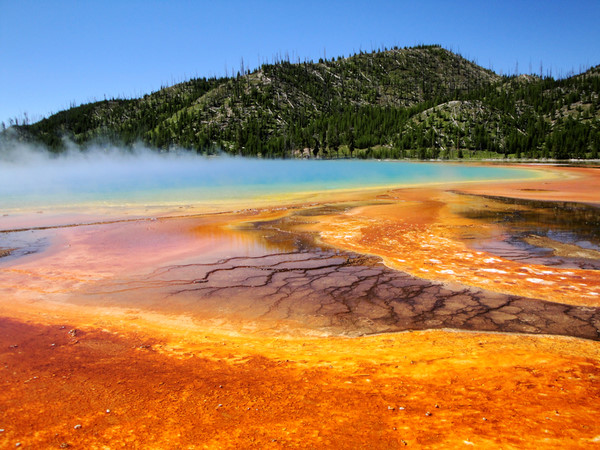We have absolutely nothing to compare it to. The biggest blast in recent times was that of Krakatau in Indonesia in August 1883, which made a bang that reverberated around the world for nine days, and made water slosh as far away as the English Channel. But if you imagine the volume of ejected material from Krakatau as being about the size of a golf ball, then the biggest of the Yellowstone blasts would be the size of a sphere you could just about hide behind. On this scale, Mount St. Helens's would be no more than a pea.

The Yellowstone eruption of two million years ago put out enough ash to bury New York State to a depth of sixty-seven feet or California to a depth of twenty. This was the ash that made Mike Voorhies's fossil beds in eastern Nebraska. That blast occurred in what is now Idaho, but over millions of years, at a rate of about one inch a year, the Earth's crust has traveled over it, so that today it is directly under northwest Wyoming. (The hot spot itself stays in one place, like an acetylene torch aimed at a ceiling.) In its wake it leaves the sort of rich volcanic plains that are ideal for growing potatoes, as Idaho's farmers long ago discovered. In another two million years, geologists like to joke, Yellowstone will be producing French fries for McDonald's, and the people of Billings, Montana, will be stepping around geysers.












